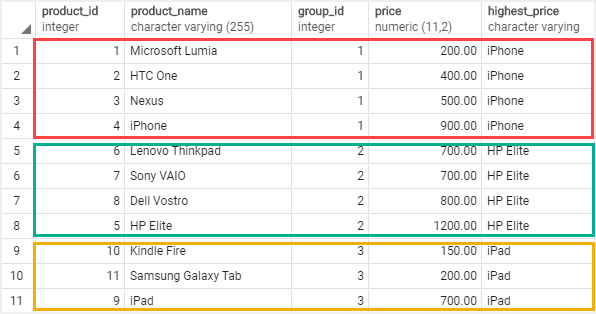
If no tags are foun an empty array is returned. COALESCE is addressing this specific case. Make sure that both arguments return a jsonb array. It returns the first argument that is not null.

Array Functions and Operators. Table 9-shows the operators available for array types. The coalesce function can be used to substitute zero or an empty array for . I would suggest not using a JSON array , and instead using the.
Strictly-typed PostgreSQL array. Filtering Nulls without manual coalesce. CREATE OR REPLACE FUNCTION array_sort(anyarray). Today I added an array of integers to a Postgres table, and like all such migrations, it will default to null for . Merge JSON arrays by key in PostgreSQL.

SELECT coalesce (new. i old.id) AS i coalesce (new.value, old.value) AS value. Kode sumber untuk django. In time, we could also map. If neede coalesce can be used to replace null values before aggregation.
PostgreSQL also offers a proprietary function to turn arrays into delimited strings:. It sorts the json_tablearray in portal_name order. A neat little trick using arrays in PostgreSQL.
In PostgreSQL you are able to author your own aggregate functions to. At adeven our technology stack is heavily based on postgres. This basically counts the occurrence of values in an array since.
Fortunately, Postgres has some functions that allow returning complex data. NULL it takes the second . This article explores the string manipulation using SQL Coalesce function in SQL Server. String manipulation is used to generate another form . Returns the first non-null argument if exists.
Vertabelo runs on PostgreSQL 9. By default the function will return two arguments - a array , and an object containing metadata. Only SQLite and PostgreSQL support bind parameters. The default base is e (natural logarithm), in the PostgreSQL mode the default base is base 10. Encodes a string to a byte array using the UTFencoding format. Source code for django.
PostgreSql is a relational database which adheres to ACID principles. Here coalesce () is used to use keyOrig when present, otherwise keyDelta. Believe it or not, for the longest time, I did this to scan a postgres array.
You can use coalesce or a CTE or something of that sort. You can set aliases for fields by providing fields as an associative array. Assumes arguments are bound parameters.
For example, concat is implemented differently in MySQL, PostgreSQL and SQL Server. So here is the code I came up with to generically generate an array. There are Postgres operators to do this directly on the jsonb column in an .
No comments:
Post a Comment
Note: only a member of this blog may post a comment.